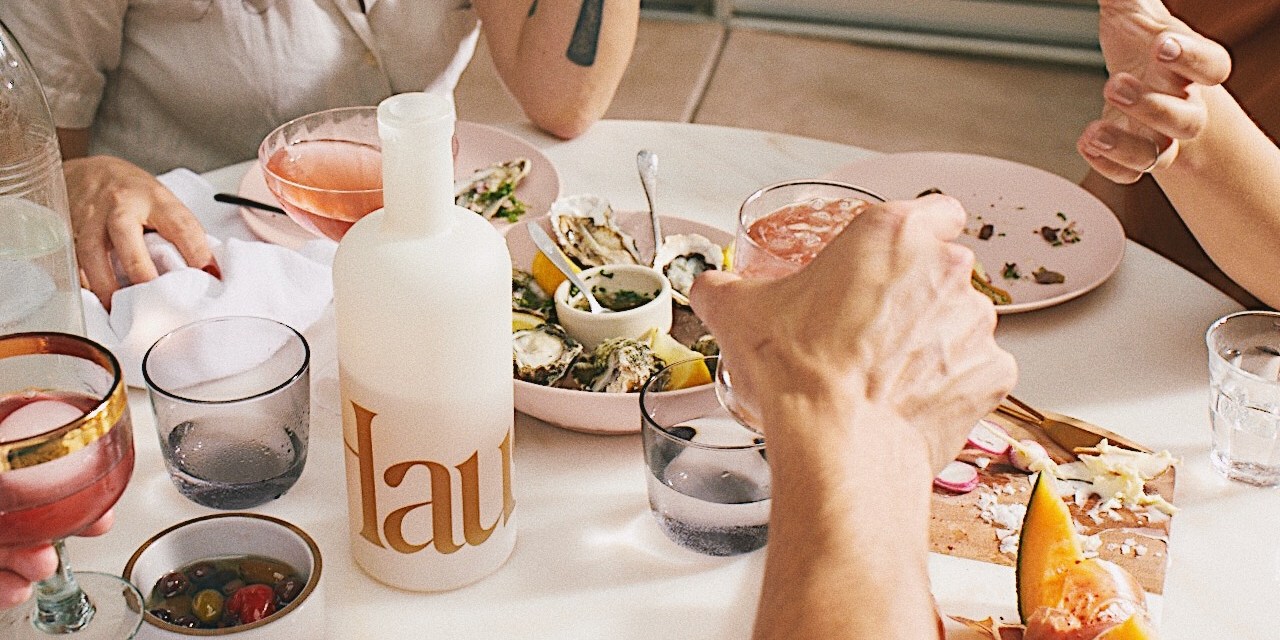Direct-to-consumer is coming to the alcohol industry

The direct-to-consumer model is infiltrating the alcohol industry.
New alcohol brands, both independently owned or part of bigger conglomerates, are using online content and marketing strategies to appeal to younger demographics and apply a DTC sensibility to booze, one category that — unlike mattresses, razors, athletic wear, beauty and household products — has only recently seen the rise of direct-to-consumer contenders. Thanks to a few legal loopholes — along with some recent legal wins — online alcohol brands like Haus, Empathy Wines and One/Vodka (owned by Pernod Ricard) and are beginning to create a new growth playbook.
Traditionally, the alcohol you buy in stores relies on what’s called the three-tier model. It essentially means that booze makers are forced sell to alcohol distributors (such as Diageo and Pernod Ricard) who then sell to retailers. This has made it so that only the select brands are given the opportunity to have national distribution. US law, however, says that wine and other lower-alcohol beverages are able to circumvent this system and sell directly to consumers. Winemakers have been doing this already, through national — and international — subscription wine clubs (for example: Winc, Wine Club of the Month and Naked Wines).
The shift to direct selling for booze brands comes as buying alcohol online is beginning to hit the mainstream. In 2017, sales hit $1.7 billion in the US, according to Rabobank. Research from Gartner L2 found that online liquor sales increased 61% year-over-year between 2018 and 2019 — a much faster clip than the industry’s overall sales. Recent media coverage has focused on flagging alcohol sales, but the direct-to-consumer space is just getting started.
For e-commerce alcohol brands, the hurdle lies in getting people to buy a drink online that they’ve never tried before. Irresistibly DTC-style branding can help. When aperitif brand Haus launched online last month, it aimed its branding and marketing strategy directly at affluent millennials, selling for $35 a bottle and hiring DTC agency Gin Lane as its branding partner. It’s positioned as an online-only, health-conscious, hard alcohol alternative.
“There’s a lot more branding involved,” said Nik Sharma, the former head of DTC for VaynerMedia. “You have to get crafty — it has to be story-based.” Sharma helped lead e-commerce at the beverage startup Hint and then moved on to VaynerMedia. One of the projects he helped assist was Gary Vaynerchuk’s alcohol brand Empathy Wines.
Both Hint and Empathy, he said, required building new brands from scratch and having consumers buy the product directly. What’s most important, Sharma said, is making an impression. People who are buying alcohol on the internet, Sharma explained, “aren’t buying because it’s a new kind of vodka or a new kind of wine.” They’re looking for something else. “The founder story usually gets at what the differentiator is,” he said, “[customers] are buying into the brand equity.”
According to Rob McMillan, evp and founder of Silicon Valley Bank’s wine division, the recent push toward DTC is a natural evolution of the wine industry. Because of the nature of alcohol distribution — more specifically, the fact that there are so few distributors who control the majority share of what’s put on store shelves — fine wine makers have been forced to sell their products directly. For decades, that simply meant setting up a tasting room on the wineries’ premises and selling bottles locally. While other companies shifted online due to growing competition from the likes of Amazon, wine has stayed mostly analog. This, said McMillan, “is incredibly inefficient.”
Now, these alcohol companies are seeing a shift in demographics. Baby boomers are growing older and millennials, many of whom don’t necessarily know about fine wines, are a growing majority. His annual survey of 1,000 top wine-makers indicates that the product has yet to penetrate many young palates.
“The younger consumer hasn’t made any growth in market share in terms of wine,” said McMillan.
What the industry is realizing, said McMillan, is that it “needed to do a better job of providing a product that young consumers can afford and want.” For decades, wine was marketed as a product for a certain generation. Now, a shift is on the horizon.
New brands, with new marketing strategies, are seeing healthy results. Empathy Wines, for example, has over 2,000 subscribers and said it’s fulfilled more than 7,000 orders since its 2018 launch. (Subscribers pay a minimum of $243/year and a minimum one-off purchase is $81.) Its brand messaging focuses on highlighting and supporting grape-growers, in addition to the wine itself. Similarly, Haus’ pitch was on a drink with less sugar than Aperol and less alcohol than most spirits. According to the company, its online store has seen more than 40,000 visitors and its first batch of 5,000 bottles sold out within 12 hours of launch (those who missed out will have a second chance on July 10).
To Sharma, this proves there’s an opening for a new type of alcohol brand. “Everybody wants to be cleaner,” he said. “There’s a trend toward cleaner alcohol.” McMillan agreed, pointing out that the younger generation “wants to know what they are putting in their mouth.” New brands have to cater to that mindset, and transparency in supply chain and ingredients lists is a common DTC brand strategy.
For the centuries-old alcohol market, an industry-wide digital rebranding is still in its early stages. As more small brands see success by bucking traditional trends, a new playbook will be laid out.
“I think what’s going to be interesting is seeing how non-sexy brands fit within that sexy profile,” said Sharma.
This article has been amended to clarify that Empathy Wine is independent from VaynerMedia.

